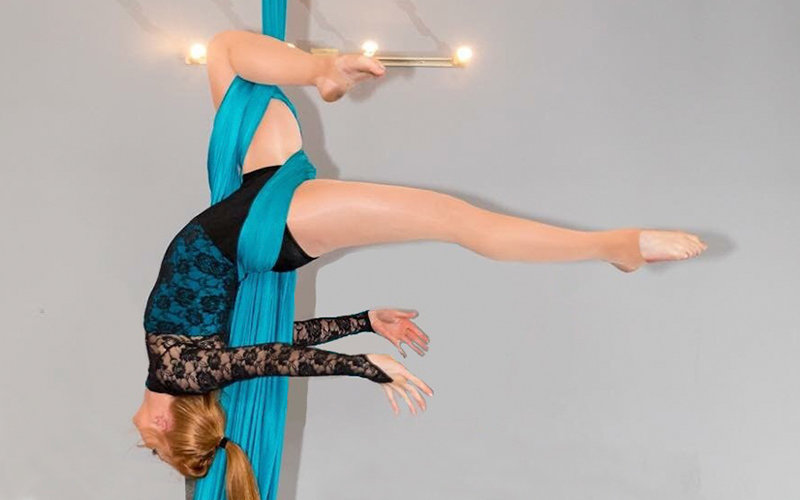
A couple of years ago as an undergraduate student, Rachel Ruggieri had little thought about conducting a research study.
Today, Ruggieri ’18 (B.S. kinesiology-exercise science) is a graduate student in kinesiology and has a published paper.
Among the recent publications published by faculty and students is the one coauthored by Ruggieri with Pablo Costa, associate professor of kinesiology: “Contralateral Muscle Imbalances and Physiological Profile of Recreational Aerial Athletes,”published in the September issue of the Journal of Functional Morphology and Kinesiology.
“There is plenty of research on dancing, gymnastics and even cheerleading, but not so much on the exercise routines of circus artists, especially as much of it is practiced as ‘aerial fitness’,” explained Ruggieri, who herself works out on the silks and hoops apparatus in this popular exercise format. “So I see the study that I did as not only looking at possible muscle imbalance but also a physiological profile for the exercise.”
Ruggieri, who began the study in her senior year of undergraduate study, noted that she found no muscle imbalances in dominant and nondominant sides, but that nondominant hamstrings and quadriceps ratios were significantly lower. However, “it’s a good overall exercise for flexibility and balance.”
In addition to conducting the study, organizing the data and writing the paper, Ruggieri also presented her research at a July National Strength and Conditioning conference. “It was a really good experience, not only doing the study but working with the study participants who were happy to help in the study. Dr. Costa was great, very supportive through the experience.”
Ruggieri is a teaching associate and teaches aerobics and weight control, as well as working in the exercise physiology lab on campus. She is working toward a career in cardiac rehabilitation and has already completed internships at St. Joseph Hospital and St. Jude Medical Center.
“Cardiovascular disease is the number one cause of death in adults in the U.S., and low cardiovascular fitness is the most important predictor of cardiovascular-disease mortality,” she explained. “In my internships, I noticed that many cardiac rehabilitation patients were sedentary.
“Because some people might be bored with traditional exercise, I believe aerial could provide an alternative to common exercise and might even help reduce the incidence of cardiovascular disease. I also would love to have the opportunity to teach aerial exercise to people as a post-cardiac rehabilitation routine.”
More information on the kinesiology and physical training programs at Cal State Fullerton is available on the department website. To support the programs, contact Elizabeth Easton, director of development for the College of Health and Human Development, at 657-278-4852, eeaston@fullerton.edu.